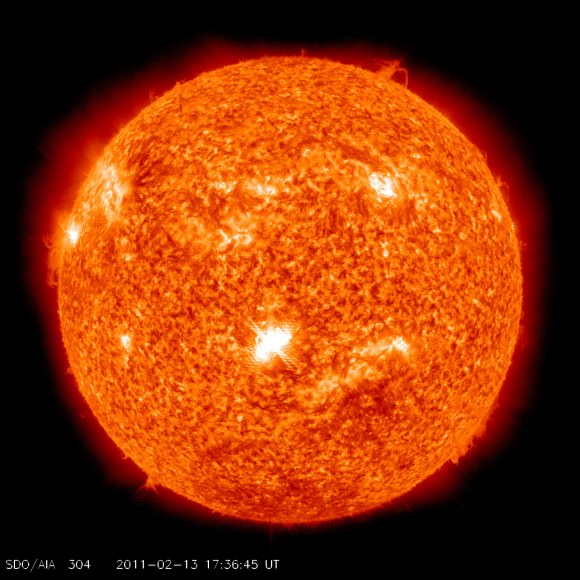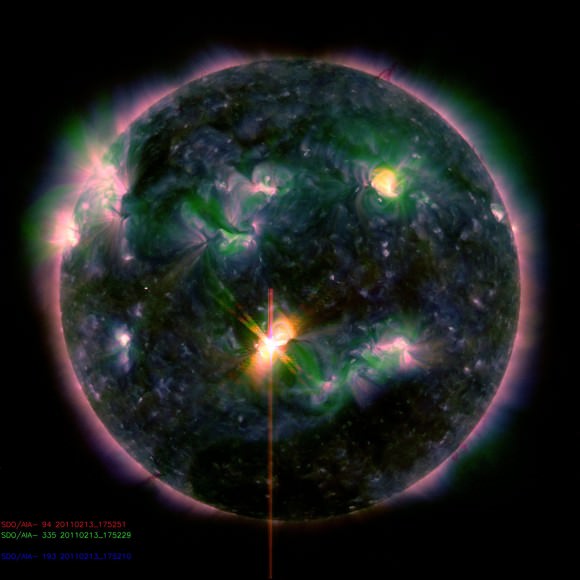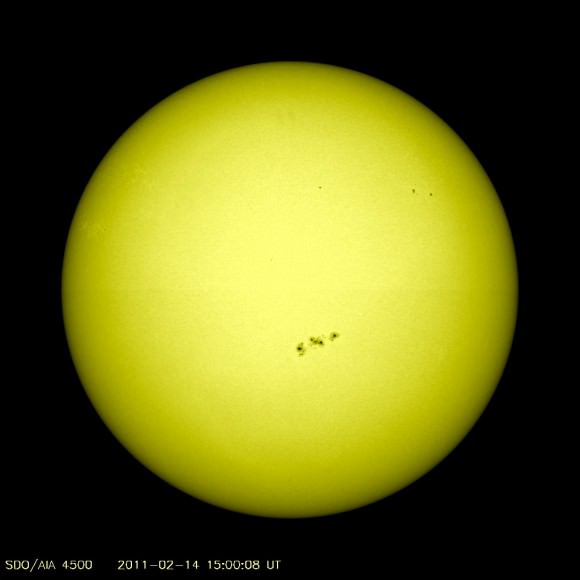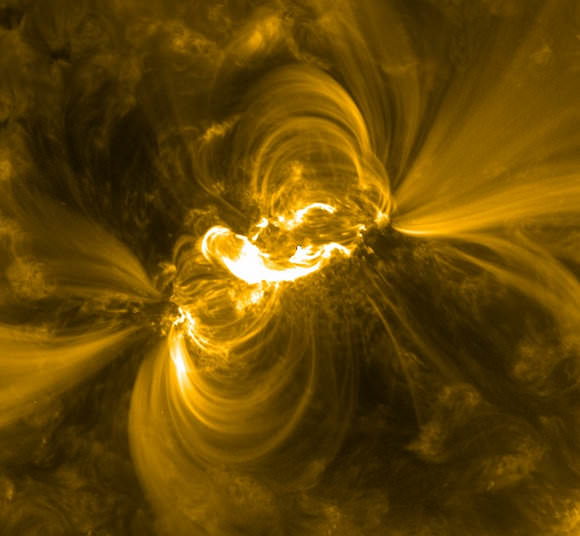[/caption]
On February 13, 2011, sunspot 1158 let loose the strongest solar flare of the current solar cycle, a blast of radiation across the electromagnetic spectrum, from radio waves to x-rays and gamma-rays. NASA’s Solar Dynamics Observatory recorded an intense flash of extreme ultraviolet radiation, as seen above, and located in approximately the middle of the Sun’s disk in the image below. The eruption also produced a loud blast of radio waves, and coronagraph data from STEREO-A and SOHO agree that the explosion produced a fast but not particularly bright coronal mass ejection. Spaceweather.com predicts a CME cloud will likely hit Earth’s magnetic field on or about Feb. 15th, and high-latitude sky watchers should be alert for auroras.

This was an M6.6-category flare. Find out more about the classification of solar flares at this link at Spaceweather.com


Jason Major from Lights in the Dark created the video below of magnetic activity around a sunspot 1158, from data region from SDO spacecraft, during February 12-13, 2011.
Keep tabs on the Sun by visiting the SDO website, which shows the current Sun in several different wavelengths.
Sources: SDO, Spaceweather.com


NOAA 1046 produced an M8-flare in February 2010.
So far in SC24, only 4 High Energetic Flares (M5 or higher) were produced:
07 Feb 10 – NOAA 1045 – M6,4 – N21
12 Feb 10 – NOAA 1046 – M8,3 – N26
06 Nov 10 – NOAA 1121 – M5,4 – S19
13 Feb 11 – NOAA 1158 – M6,6 – S20
Obviously, after today’s (15 Feb) X2,2-flare, NOAA 1158 did indeed produce the largest solar flare so far during SC24.
The region is still magnetically complex, so further powerful flares remain possible.
The sunspot has been busy all today too! Check this out:
2012 hoaxers are awfully quite. Maybe they are in their bunkers right now. lol